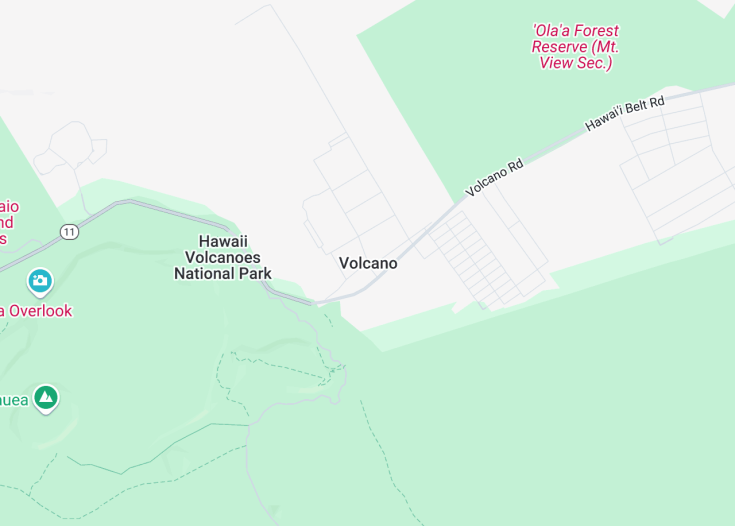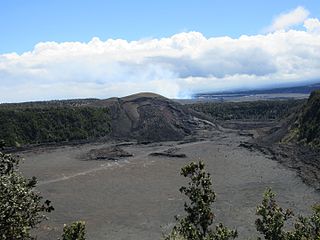Hawaii’s volcanoes are not only a dramatic natural spectacle but also a profound lesson in Earth’s geological processes. Visitors to Hawaii Volcanoes National Park can witness the awe-inspiring sight of active lava flows, a testament to the island’s ongoing formation. This destination offers a unique opportunity to observe firsthand the creation and evolution of new land, all while experiencing the rich culture and vibrant ecosystems that thrive in these dynamic environments. The park is a must-visit for anyone interested in science, nature, or adventure.
For a safe visit, always check the park’s website for current lava viewing conditions and area closures before planning your trip to Hawaii’s volcanoes.
Consider visiting during the early morning or late evening for a more dramatic view of the lava flows, when the glow of the molten rock is especially vivid against the darkened sky.
Top things to do & see in Volcano
Select the following sights and activities to discover best tickets and tours available in Volcano.
Volcano: Heart of Hawaii’s Natural Majesty
| Country | Hawaii (USA) |
| Time in Volcano | GMT-10 |
| Language spoken | English |
| Population | 2,575 (U.S. Census Bureau, 2020) |
| Currency | U.S. Dollar (USD $) |
| Airports |
|
Volcano, Hawaii, renowned for its enthralling natural landscapes, is truly a unique destination. Home to the famous Kīlauea and Mauna Loa active volcanoes within Hawaii Volcanoes National Park, it offers an unforgettable experience with its dynamic natural environment and geological formations. The history of Volcano is deeply intertwined with native Hawaiian culture and traditions, reflecting a profound respect and reverence for the natural world.
This area also significantly contributes to scientific research in geology, biology, and environmental science due to its unique ecosystem and geological characteristics. Visitors to Volcano can enjoy a myriad of outdoor activities such as hiking, bird watching, and witnessing live lava flows, making it an unparalleled destination for those seeking adventure and connection with nature.
Where is Volcano?
Volcano is situated on the southeastern part of Hawaii Island, also known as the Big Island, in the State of Hawaii.
Distances:
| Route | Distance by car | Time by car |
|---|---|---|
| Hilo to Volcano | 40 miles | 45 minutes |
| Kona to Volcano | 100 miles | 2 hours 15 minutes |
What is Volcano famous for?
Volcano is most famous for the Hawaii Volcanoes National Park, a location which allows visitors to explore some of the most active volcanoes in the world and experience natural phenomena first-hand.
History
Pre-European Contact (Before 1778)
The region known as Volcano in Hawaii has a rich history that dates back several centuries prior to European contact. The native Hawaiian people, with their Polynesian heritage, originally settled in the islands around 300-600 AD. These first inhabitants revered the volcanoes as sacred sites, associating them with Pele, the goddess of fire, lightning, wind, and volcanoes. For these early Hawaiians, the volcanic landscapes were both a source of awe and reverence, often seen as manifestations of divine power.
European Discovery to 20th Century (1778-1900)
The first recorded European to set foot on Hawaii was Captain James Cook in 1778. With the arrival of Europeans, the dynamics of the island and its culture began to change profoundly. Over the next century, Hawaii saw numerous changes from becoming an internationally recognized monarchy to a strategic port of call for many seafaring nations. In 1916, Hawaii Volcanoes National Park was established, recognizing the unique ecological and cultural value of the volcanoes while also paving the way for preservation efforts and scientific research.
20th Century Developments and Tourism (1900-Present)
Throughout the 20th century, Volcano, Hawaii grew significantly as a result of increased tourism and scientific interest. The establishment of the Kilauea Volcano Observatory in the early 1900s marked the beginning of serious scientific studies in the area. Tourism started to pick up as people worldwide became fascinated with the opportunity to witness volcanic activity firsthand. Modern developments, while boosting the local economy through tourism, have also created challenges, including ecological pressures and the need for sustainable practices in order to preserve the area’s unique natural heritage.
Visit Volcano
What to see and do in Volcano, Hawaii (USA)
The small village of Volcano, located near the edge of one of the most active volcanoes on Earth, Kilauea, offers a rich blend of natural beauty and cultural heritage. Key highlights include:
- Hawaii Volcanoes National Park: Explore the rugged landscapes shaped by centuries of volcanic activity.
- Thomas A. Jaggar Museum: Learn about the geology of Hawaiian volcanoes and the history of volcanic studies here.
- Volcano Art Center: Discover local art inspired by the natural surroundings and volcanic phenomena.
- Crater Rim Drive: Take a drive or hike around this scenic path that offers stunning views of volcanic landscapes.
Volcano’s proximity to Kilauea makes it a prime spot for those interested in geology and natural sciences, as well as individuals seeking a unique cultural and historical perspective on Hawaii.
Festivals and Events in Volcano
Volcano, Hawaii, hosts several recurring events that celebrate its unique geographic and cultural landscape. Notable events include the Volcano Rain Forest Runs held in August, offering participants breathtaking views while running. Additionally, the Volcano Village Art Studio Tour and Sale, typically held in November, showcases the works of local artists inspired by the natural beauty of the area.
Best time to visit Volcano
The best time to visit Volcano, Hawaii largely depends on personal preferences for weather and activities. For hiking and outdoor activities, April through October offers the most pleasant weather, with less rainfall and milder temperatures. Those interested in witnessing volcanic activity should stay updated with the Hawaii Volcanoes National Park for any volcanic alerts and optimal viewing times.
Is Volcano worth visiting?
Volcano, Hawaii, undoubtedly offers a compelling destination for those intrigued by natural phenomena, geology, and Hawaiian culture. The access to viewing active volcanic activity in a safe manner is a rare opportunity. On the downside, the remote location and potential volcanic hazards might pose challenges for some travelers. However, for those prepared for the adventurous and somewhat rugged conditions, Volcano makes for a memorable and educational visit, rich with breathtaking scenic views and a profound sense of nature’s power.















